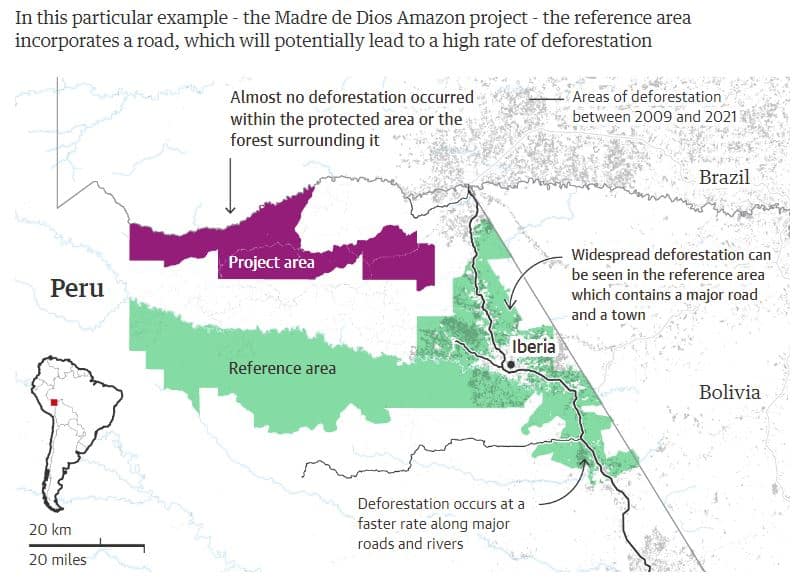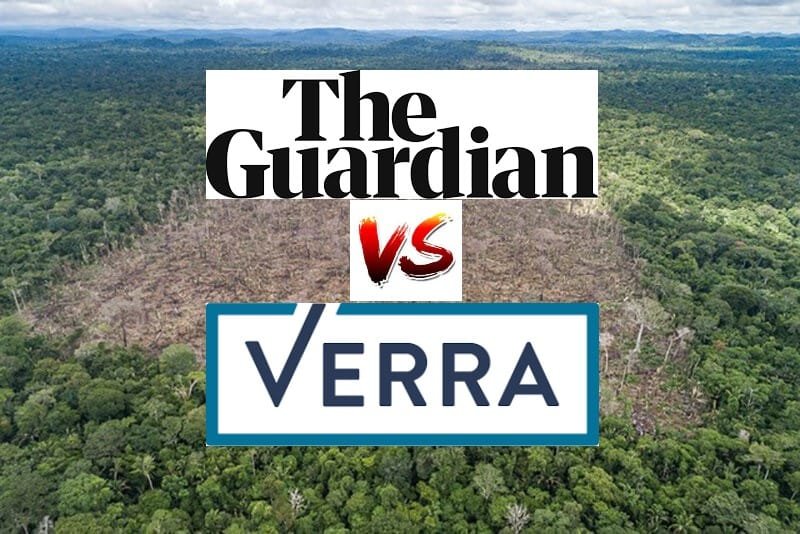An investigation claimed that over 90% of its forest carbon credits likely don’t represent real emission reductions, but Verra said that this is incorrect because the studies miscalculate the impact of its REDD+ projects.
Verra is the world’s leading carbon standard for carbon credits that support global climate action. To date, it has issued over 1 billion carbon credits since 2009.
The credits enabled billions of dollars invested into urgent climate action, sustainable development, and the protection and restoration of ecosystems, Verra stated.
Findings on Verra’s REDD+ Projects
An analysis of some forest projects, also called REDD+, that Verra verifies says that the carbon credits those projects generate are “largely worthless” and are “phantom credits”.
The 9-month investigation was done by the Guardian, the German weekly Die Zeit, and SourceMaterial, a non-profit investigative journalism organization.
Their findings are based on an analysis of scientific studies of Verra’s rainforest schemes. These studies used satellite images to check the results of the REDD+ projects under investigation.
- REDD+ means “reducing emissions from deforestation and forest degradation, plus the conservation, sustainable management of forests and enhancement of forest carbon stocks in developing countries”.
Example of a Verra REDD+ Project

A team of journalists that performed the investigation concluded these key findings:
No climate benefit:
According to two studies, only a handful of Verra’s rainforest projects showed evidence of deforestation reductions. Further analysis also shows that 94% of the carbon credits bring no benefit to the climate.
Overstatement of forest threats:
A study by the University of Cambridge in 2022 revealed that the threat to forests was overstated by about 400% on average for Verra REDD+ projects.
Carbon credits buyers:
Big corporations are the major buyers of carbon offset credits approved by Verra for climate and environmental benefits. They include Shell, BHP, EasyJet, Pearl Jam, Salesforce, Gucci, and Disney among many others.
Human rights issues:
At least one of the projects involves a serious concern with human rights issues. Residents in a project site (in Peru) said that they were forced to leave their homes that were cut down by park authorities.
The studies that journalists based their analysis on used different methods and time periods. They also looked at various ranges of Verra REDD+ projects.
The researchers noted that their studies have limitations and that no modelling approach is ever perfect. Still, the data spoke of broad agreement on the lack of effectiveness of the projects compared with the Verra-approved predictions, the analysts said.
Verra strongly disputed the findings, saying the methods the studies use cannot capture the projects’ real impact on the ground. This is where the difference in calculating the carbon credits Verra approves and the reductions the scientists estimate lies.
Verra’s Response: Incorrect Conclusions
Verra worked closely with the publication to explain why their findings are not true. The carbon standard responded that it is:
“…disappointed to see the publication of an article in the Guardian, developed with Die Zeit and SourceMaterial, incorrectly claiming that REDD+ projects are consistently and substantively over-issuing carbon credits.”
Verra further said that the claims in the article are based on studies using “synthetic controls” that don’t account for project-specific factors that cause deforestation. Thus, they greatly miscalculated the impact of Verra’s REDD+ projects.
The carbon credits verifier develops and improves its methodologies through rigorous consultations with academics and experts.
This is to make sure that project baselines used to calculate carbon credits are robust. Only then that they can serve as a credible benchmark against which to assess the impact of the projects.
Verra certifies projects that avoid, reduce, or remove emissions measured in tonnes of CO2 or its equivalent (CO2e).
The Claims are Not True – Verra
Verra welcomes scrutiny of methodologies and contributions from other experts through public consultations.
Though the studies provide data that contribute to the broader work on optimizing methodologies for rainforest projects, they have limited utility for assessing the impact of REDD+ projects, Verra stated. That’s because, again, they don’t take into account site-specific drivers of deforestation.
In particular, the studies have incorrect findings as they rely on synthetic controls that don’t accurately represent the pre-project conditions in the area. The authors themselves acknowledge this.
- Synthetic controls compare a project to a control scenario based on a set of variables that impact deforestation. On the other hand, Verra’s approach for REDD+ projects compares them to real areas.
The verifier is also using synthetic controls for certain project types, i.e. Improved Forest Management in North America. But this approach is not suitable for REDD+ projects due to the difficulty in finding points that match inside and outside the project area.
Verra also noted that their REDD+ projects are not randomly located. There are local factors at play to know that a specific area is at acute risk of deforestation. And that’s crucial in deciding which project area to select.
Verra REDD+ methodologies are designed to address the variability between the project area and surrounding areas, whereas the synthetic controls used in studies do not effectively do this.
Therefore, the studies calculated emission reductions different from the number of carbon credits that Verra issued to the projects.

